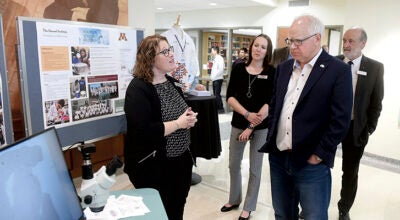State Medicaid changes save $10.5M
Published 9:00 am Friday, July 18, 2014
A program to lower health costs through new payment contracts with doctors and hospitals generated about $10.5 million in savings during its first year, according to state officials.
The new contracts let health care providers share in the savings when quality care is provided more efficiently. So, some of the money is going to three providers that are part of the new program.
The remainder of the savings will be split between the state and federal government.
The program works within the state-federal Medicaid public health insurance program, and when Minnesota officials first announced it in February 2013, they called it a “Medicaid ACO.”
ACO stands for “accountable care organization,” a new type of payment relationship between the government and health care groups that was established by the federal health care law of 2010 within the Medicare program.
In Minnesota, commercial insurers also have been developing ACO-style contracts with health care providers, offering financial rewards for doctors and hospitals that better coordinate care for patients.
The idea is that better coordination can bring better care for patients, at a lower overall cost. Put another way, the new system is meant to pay doctors and hospitals for the quality of care provided, rather than the quantity of services that patients receive.
Last year, state officials said they expected Minnesota could see $90 million in savings over three years.
“I think we’re very much on track for that goal,” said Human Services Commissioner Lucinda Jesson.
About 100,000 people in public health insurance programs were involved in the new program during its first year. The savings should expand going forward, Jesson said, because more beneficiaries and health care providers are expected to participate.
“We’re ramping up our enrollment in this program,” she said in an interview.
Final financial results from the first year of the program will be calculated in early 2015.





